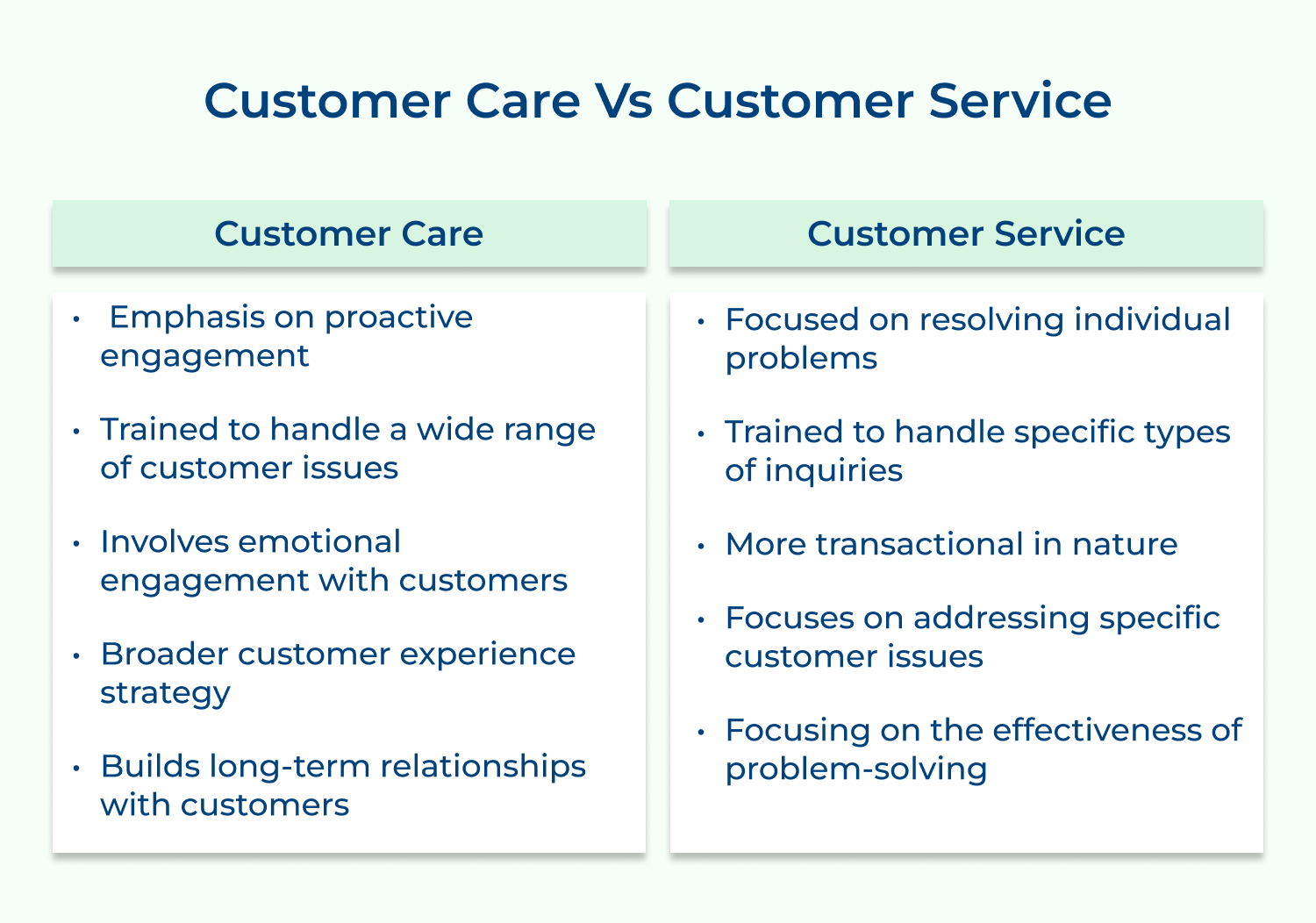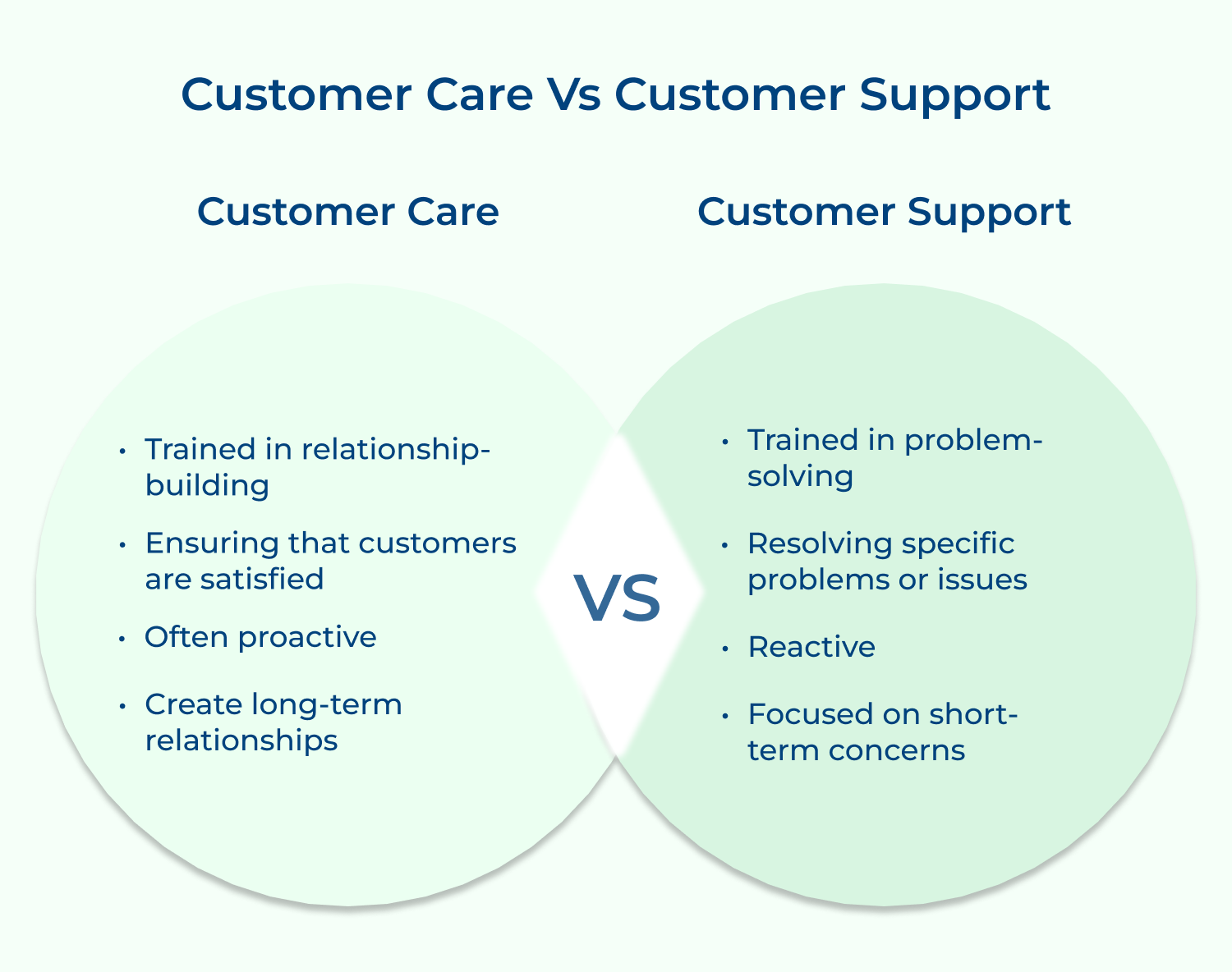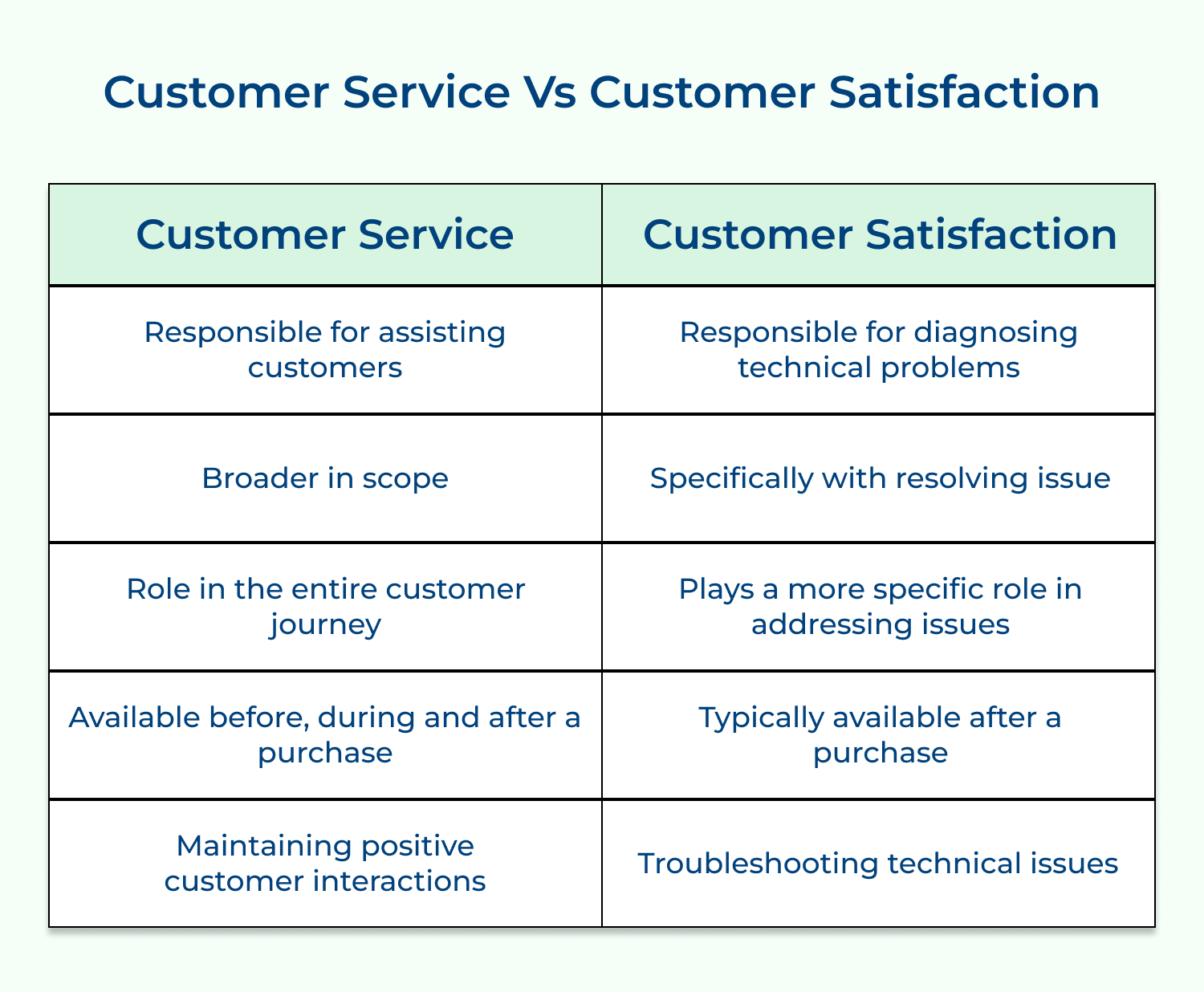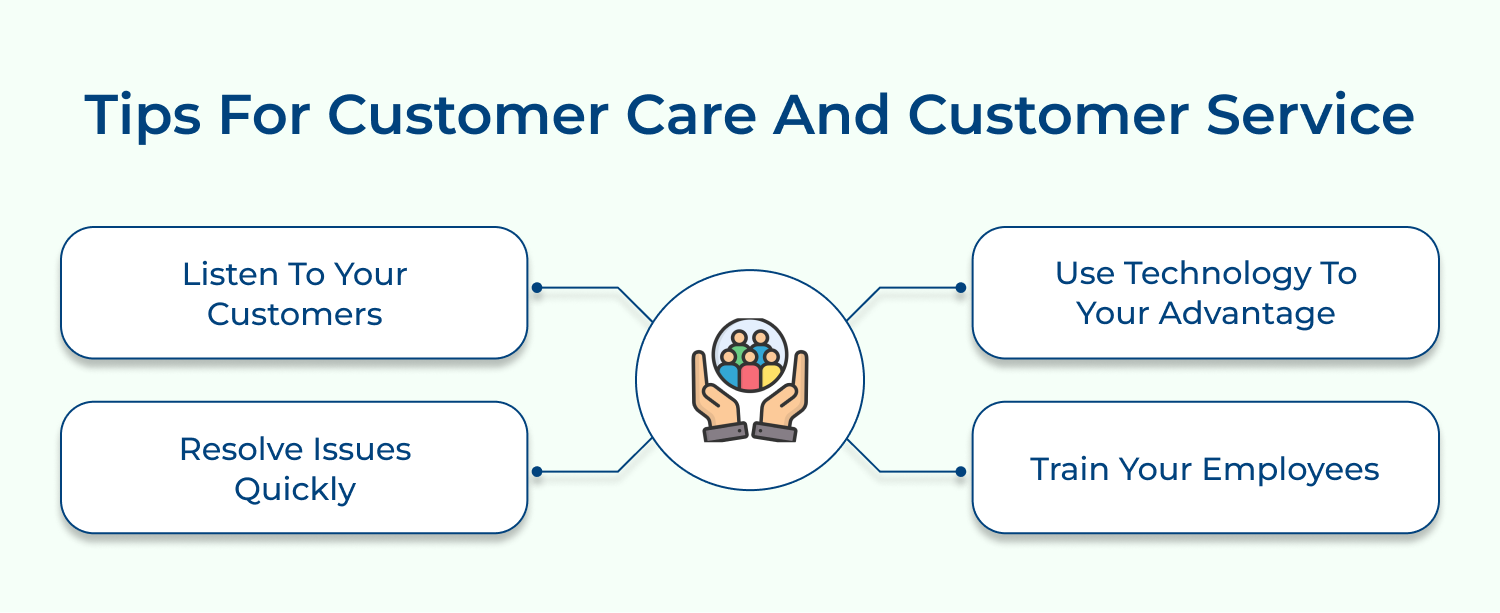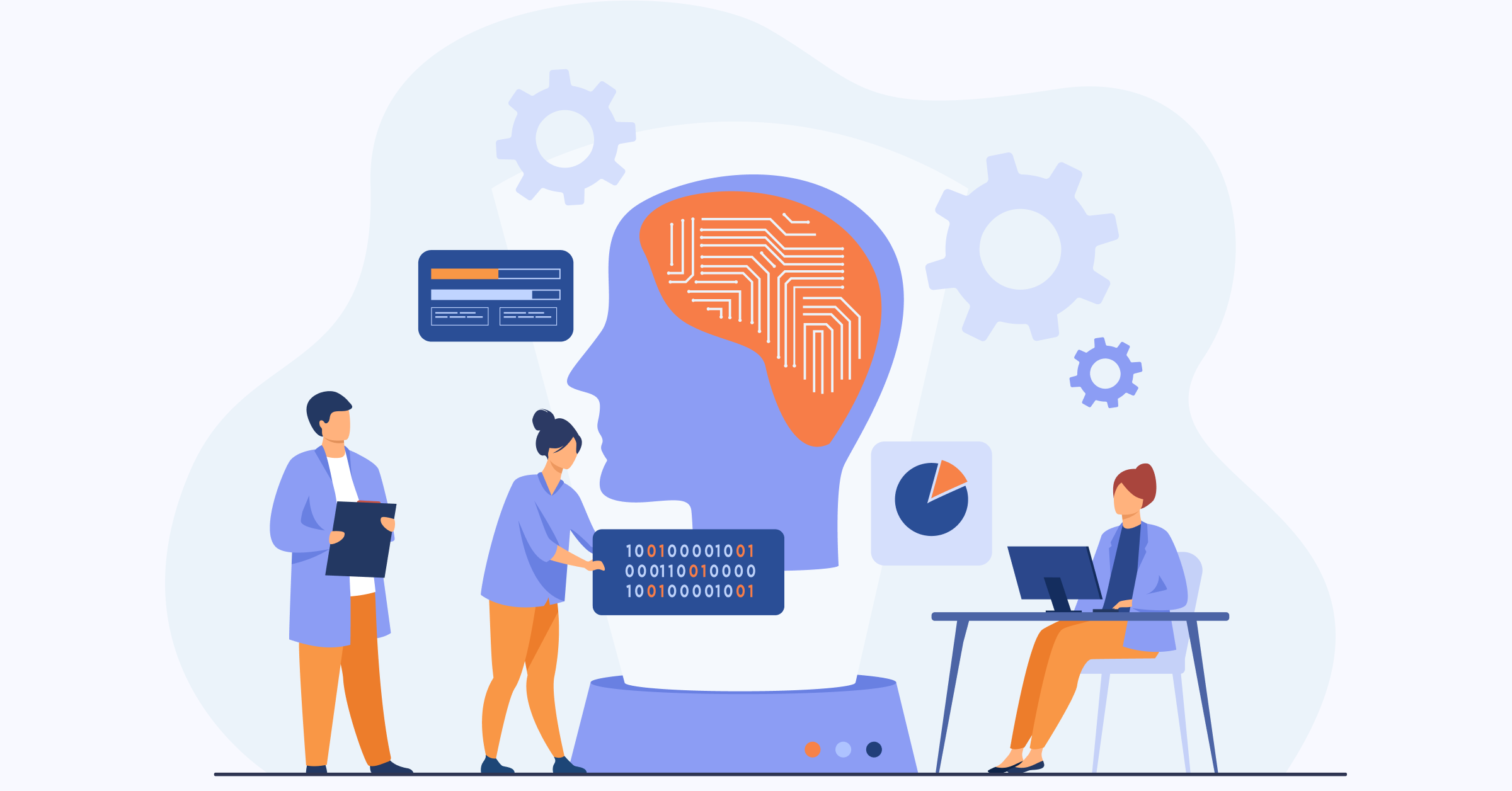Let us comprehensively discuss the key differences between customer care and customer service.
1. Definition
Customer care refers to the overall support provided to customers before, during and after a purchase. It focuses on building long-term customer relationships by holistically addressing their needs.
Customer service is more transactional, focusing on resolving specific issues or inquiries on time.
2. Focus
Customer care places a strong emphasis on proactive engagement with customers to anticipate and address their needs. It involves understanding the customer’s journey and providing personalized support to enhance their overall experience.
Customer service is reactive and primarily focused on resolving individual problems or inquiries as they arise.
3. Communication
Customer care involves ongoing communication with customers through various channels such as phone, email, live chat and social media. It aims to establish a customer rapport and provide continuous support throughout their interactions with the company.
Whereas customer service focuses on immediate communication to address specific issues or questions raised by customers.
4. Relationship-building
Customer care prioritizes building strong, long-lasting relationships with customers by providing personalized attention and support. It aims to create loyal customers who are satisfied with the overall experience they receive from the company.
Customer service focuses on meeting the immediate needs of customers and resolving any problems or concerns they may have.
5. Proactiveness
Customer care is often proactive, seeking to anticipate and address potential issues before they escalate. It involves actively engaging with customers to gather feedback, address concerns and offer solutions to enhance their experience.
Customer service is more reactive and responds to specific requests or inquiries from customers as they arise.
6. Training
Customer care representatives are well trained to handle a wide range of customer issues and are equipped with the tools needed to provide comprehensive support. They may receive training in areas such as communication skills, conflict resolution and relationship-building techniques.
Whereas customer service representatives are typically trained to handle specific types of inquiries or issues and may focus more on technical knowledge or product expertise.
7. Problem-solving
Customer care takes a holistic approach to problem-solving, considering the customer’s overall experience and long-term satisfaction. It seeks to address underlying issues and provide comprehensive solutions that meet the customer’s needs.
Customer service is more focused on resolving immediate problems or concerns raised by customers in a timely and efficient manner.
8. Emotional Engagement
Customer care often involves emotional engagement with customers, as reps seek to understand their feelings, motivations and concerns. It aims to build trust with customers by demonstrating empathy and compassion.
Whereas customer service may be more transactional in nature, focusing on providing quick and efficient solutions to customer’s problems without necessarily engaging on an emotional level.
9. Metrics
Customer care is measured based on metrics such as customer satisfaction, retention rates and customer lifetime value. It aims to build long-term relationships with customers and generate repeat business through exceptional service.
KPIs and metrics to measure customer service are response time, resolution rate and customer feedback, focusing on the effectiveness of problem-solving.
10. Strategy
Customer care is often included as part of a broader customer experience strategy, which aims to deliver a seamless and personalized experience for customers across all touchpoints. It is integrated into the overall customer journey and involves aligning business goals with customer needs.
Whereas customer service is more tactical and focuses on addressing specific customer issues or inquiries as they arise.
Customer Care vs Customer Support
Customer care and customer support, both are important aspects of any business, it is essential to understand the key differences between the two in order to provide the best possible service to customers.

